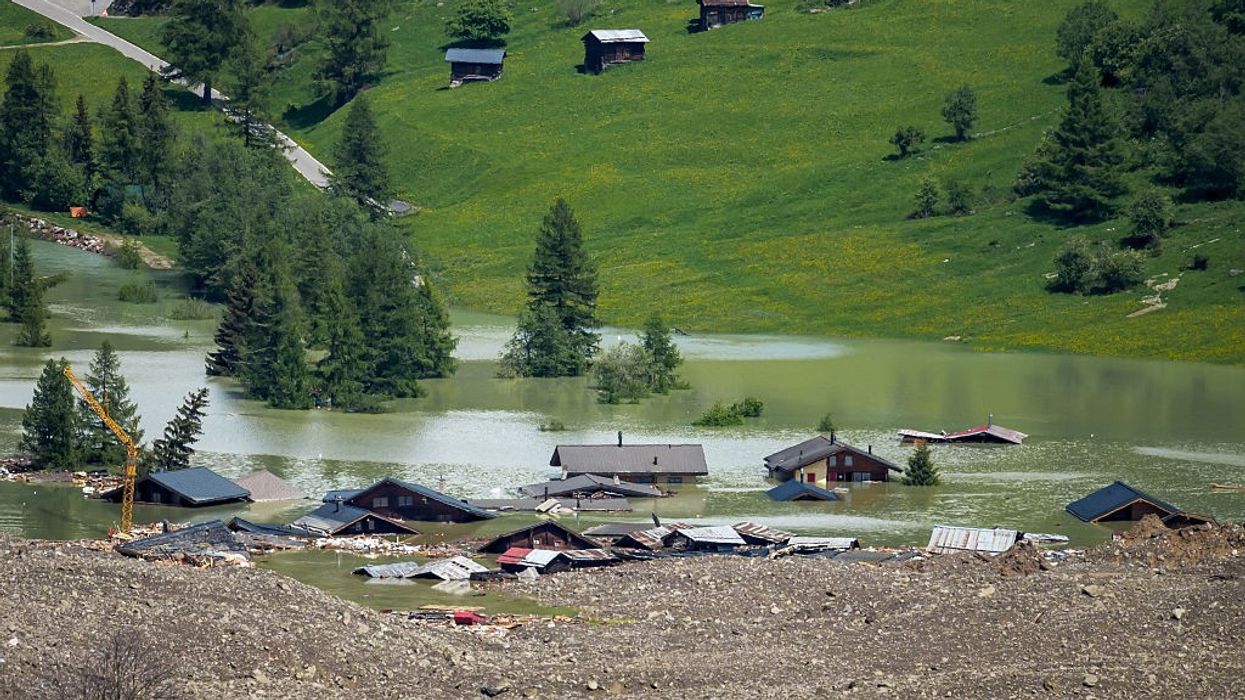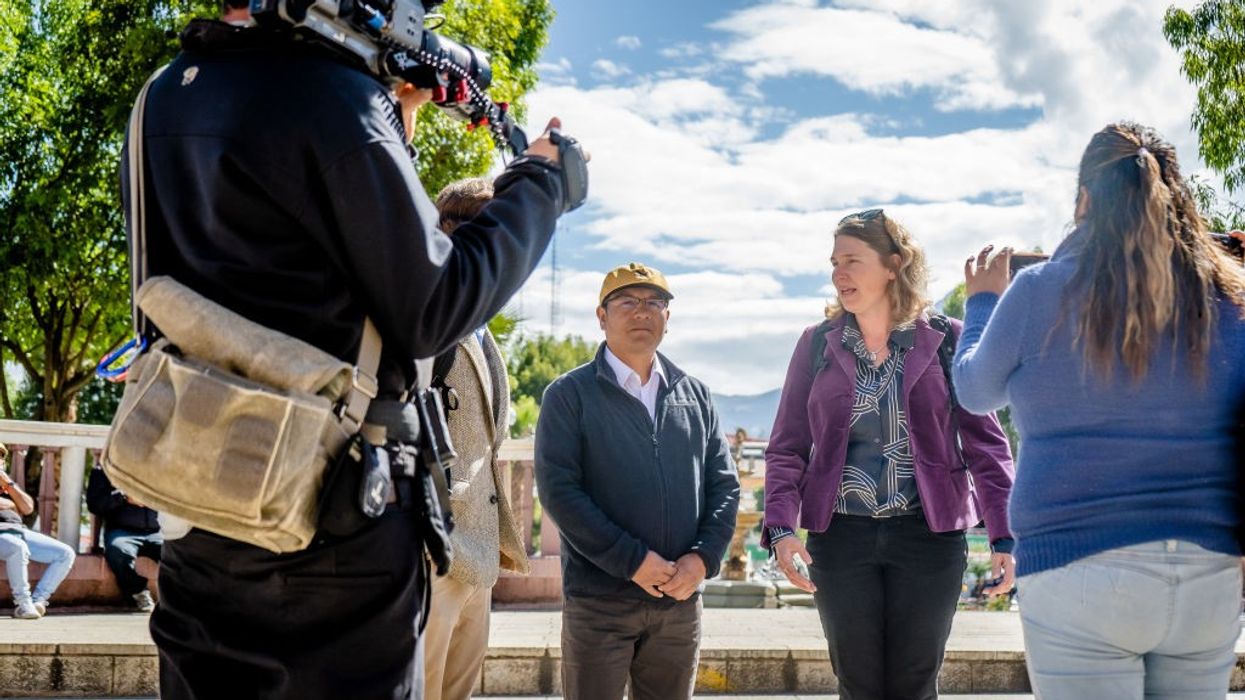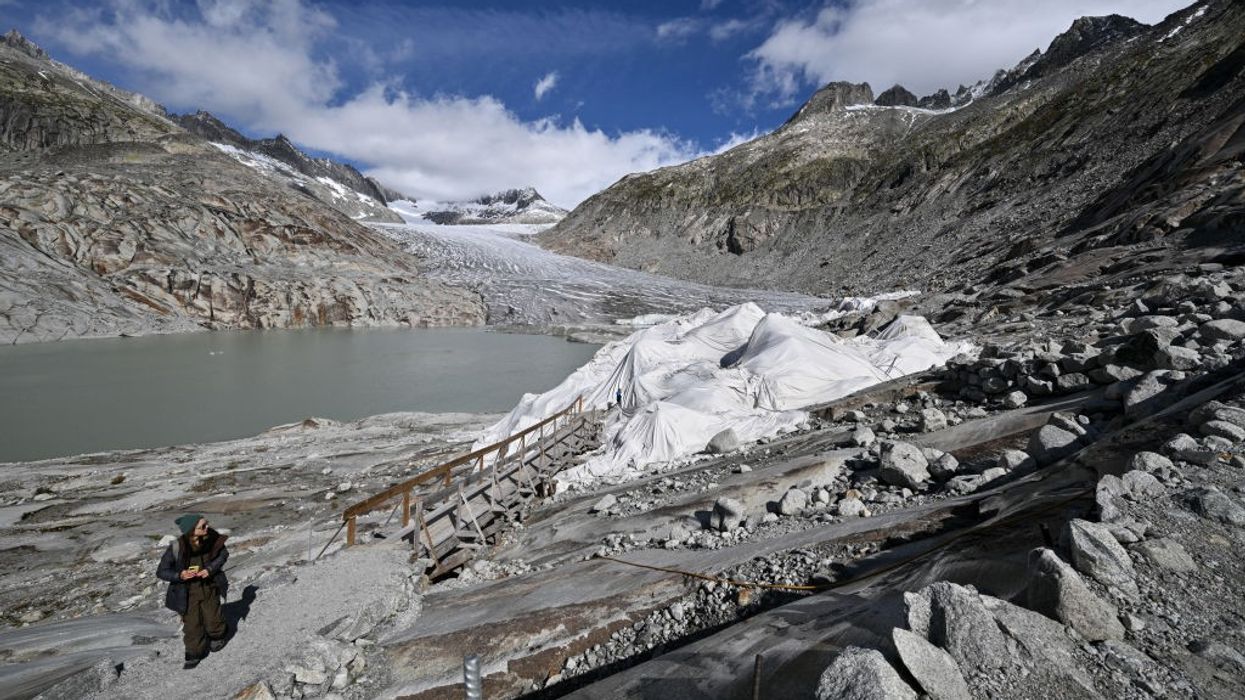Swiss Glacier Collapse That Buried Village Likely a 'Direct Result of Our Warming Climate'
"What happened to Birch Glacier is what we would expect from rising temperatures in the Alps and elsewhere," one scientist said.
Thawing permafrost exacerbated by human-caused global heating is the likely culprit behind a massive glacier collapse that buried nearly the entire Swiss town of Blatten, one scientist said Thursday while warning of the likelihood of similar disasters in the future.
The alpine hamlet of 300 inhabitants—who were evacuated earlier amid warning signs of disaster—was almost completely wiped out on Wednesday after the Birch Glacier, located in the Lötschental Valley in northern Switzerland, collapsed. The glacial avalanche, laden with boulders and other debris, cascaded down the mountainside and into the village, obliterating everything in its path. Local officials said around 90% of Blatten was buried.
"We've lost our village," Blatten Mayor Matthias Bellwald told reporters. "The village is under rubble. We will rebuild."
before and after today’s glacier collapse that buried 90% of blatten, switzerland
[image or embed]
— ian bremmer ( @ianbremmer.com) May 28, 2025 at 3:01 PM
While there are no verified casualties from the disaster, one 64-year-old man has been reported missing.
Mathieu Morlighem, a glaciologist at Dartmouth College in New Hampshire, told ABC News that permafrost thaw under and along the sidewalls surrounding the glacier likely caused the collapse.
"What happened to Birch Glacier is what we would expect from rising temperatures in the Alps and elsewhere," he explained. "I think we can expect more events like this in the future."
As ABC News reported:
Glaciers in Switzerland have lost almost 40% of their volume since 2000, and the loss is accelerating, according to the Swiss Federal Institute for Forest, Snow, and Landscape Research. Record-high summer temperatures in 2022 and 2023 caused a 10% glacial ice loss in the country.
Experts warn that Switzerland's glaciers could disappear completely by 2100 due to the climate emergency.
As Common Dreams reported in March, the crisis is planetary and is predicted to adversely affect nearly 2 billion people who depend upon glaciers for agricultural irrigation and drinking water.
"Most of the world's glaciers, including those in mountains, are melting at an accelerated rate worldwide," a United Nations Educational, Scientific, and Cultural Organization report published earlier this year warned. "Combined with accelerating permafrost thaw, declining snow cover, and more erratic snowfall patterns... this will have significant and irreversible impacts on local, regional, and global hydrology, including water availability."
The Swiss collapse happened a day before Thursday's opening of the
High-Level International Conference on Glaciers' Preservation in Tajikistan, which aims to "highlight the vital role of glaciers in maintaining global ecological balance and addressing water-related challenges."


